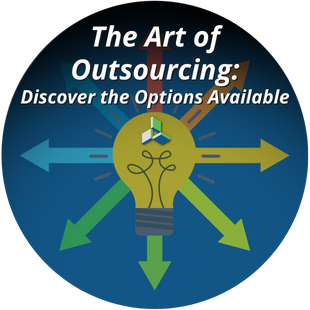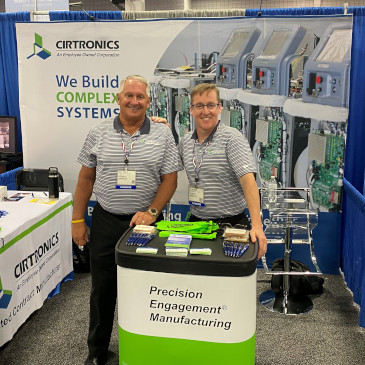
This article was written by Stephanie Gronvall, Director of Marketing at Cirtronics as a contributory article for MedTech Outlook Magazine online.
The team is designing a successful product, and production is starting to scale. It is time to consider what kind of outsourcing is necessary to be successful. So, how does the team know the best outsourcing, and when is the right time? In recent years, terms like ‘offshoring,’ ‘onshoring,’ ‘reshoring,’ ‘nearshoring,’ and more have increased – but the implications of selecting between these options cannot be understated. Outsourcing is an art, and deciding where and when to move medical device manufacturing could mean the difference between successful commercialization or taking on even more significant risks.
While onshoring (also known as ‘reshoring,’ ‘inshoring,’ or ‘backshoring’) appears to be the most logical decision to reverse offshore projects, there is a superior alternative – best-shoring. Rather than simply returning operations to just anywhere in the United States, best-shoring works to identify the best location and partner for your product’s manufacturing. This strategy weighs all criteria to fully balance cost efficiency, potential disruptions, and quality concerns, accommodating even the most complex projects. Additionally, best-shoring is a strategy when outsourcing previously internal production processes. So, could best-shoring be the solution you’ve been searching for to solve your medical manufacturing pain points? Consider these four critical elements during your outsourcing journey:
Total Cost of Ownership
Total cost of ownership (TCO) considers direct and indirect costs and risk factors. In-house or overseas manufacturing operations often need help with efficiency and supply chain issues. With rising labor costs overseas, there are significant cost savings when relying on a local contract manufacturing (CM) partner from technological, infrastructural, and transportation standpoints.
Optimal resource allocation through your ‘best-shore’ partner frees up your facility space and allows your team to spend more time on research and design for new and existing products. You can leverage your CM’s experience and fully trained personnel to handle everything from sourcing to delivery, facilitating increased productivity, in addition to your cost and space savings.
Disruption Mitigation
Life-sustaining and critical care medical devices require the highest complex regulatory compliance and traceability levels. From production orders and device history records (DHR) down to the component level, everything must be aligned with market/regulatory requirements to ensure containment and mitigate recall risks.
A best-shoring CM partner will be equipped to combat any known or forecasted uncertainties for material availability. With established supply chain strategies to handle any disruptions, they’ll provide a balance of stability and flexibility to manage part fluctuations and compliance issues. Additionally, your best-shoring partner will have strict quality control standards, monitoring the manufacturing process from start to finish.
Design for Manufacturing and Scale
Combating supply chain disruptions isn’t the only place where flexibility is critical. A best-shore CM will have the resources to cooperatively build (co-build) with your engineers, validating processes and documentation to accelerate your production ramp to full-scale manufacturing. Engineering change orders (ECOs) can efficiently be made to reduce component issues or increase build efficiency without affecting the performance of your medical device.
Additionally, a best-shore CM can scale according to forecasted demand or fluctuations in demand. Local expertise from a CM allows faster innovation and access to emerging technologies for your product. At the same time, their flexible business culture will give you peace of mind that every aspect is handled in the best way possible.
Close Collaboration
Most important in a best-shoring partnership is proactive and honest communication. A local CM facilitates co-building capabilities during the manufacturing process and welcomes you into their facility before making a decision, offering an inside look into current operations and answering any questions. Offshore projects often need more cohesive communication through time zones. At the same time, a local best-shore partner can share accurate real–time information – whether forecasting, shortages or build/delivery status.
Additionally, the complexity of a medical device product often needs revisions or design edits before going into full production. Transparent communication produces successful products to be delivered in the timeliest manner possible and establishes trust with your best-shore CM – essential to building a prosperous relationship.
Best-shoring for manufacturing includes several benefits to elevate onshoring to the next level. With total cost of ownership in mind throughout the manufacturing process, your best-shore CM will use their expertise to alleviate supply chain disruptions, ECO pains, and quality concerns. Total transparency allows you insight into every step of the medical device build process while letting you focus on the bigger picture.
Ideally, your new best-shore contract manufacturing partner will offer specific services to ease your transition. For example, Cirtronics facilitates best-shoring by providing a suite of Transition to Manufacturing (T2M) services that accelerate products to full-scale production.
Whether you’re outsourcing from in-house manufacturing, looking for additional capacity, designing next generation products, or onshoring/reshoring to the US, we’re ready to put our expertise to work for you. Contact Cirtronics to help you achieve more by best-shoring your medical device.
This article was written by Stephanie Gronvall, Director of Marketing at Cirtronics.


